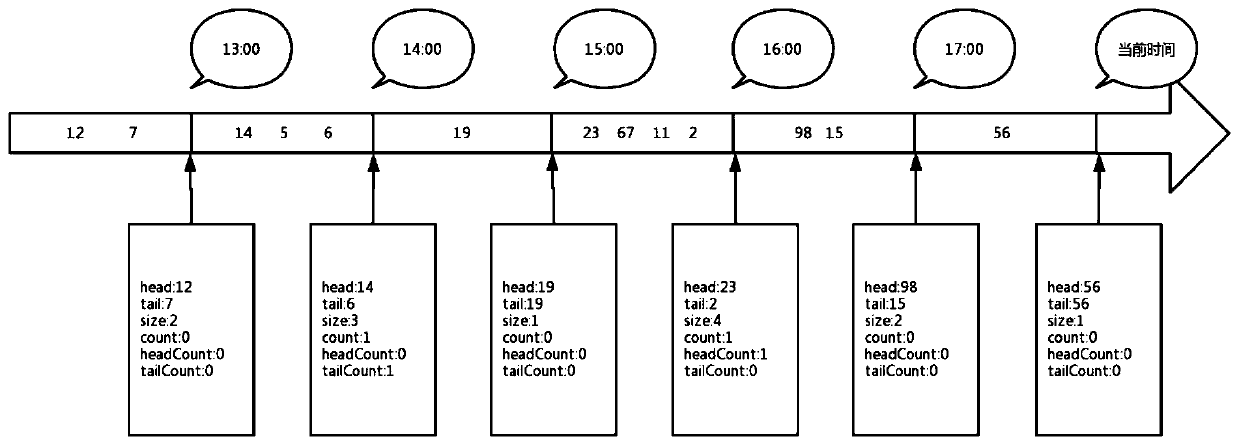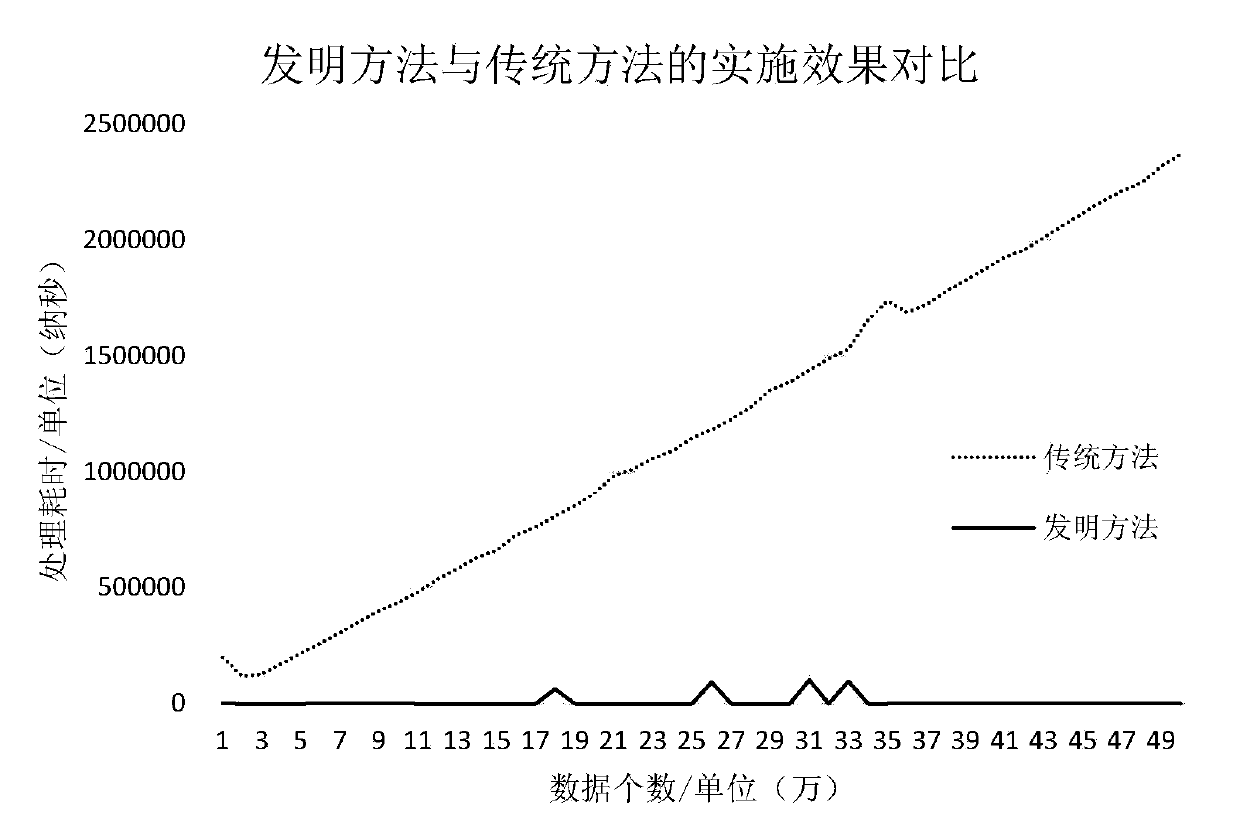A processing method for querying time series data and counting the maximum number of consecutive increments and decrements
A technology of time series data and processing method, applied in the field of data analysis, can solve the problems of complex calculation process and low efficiency, and achieve the effect of smooth movement of time window, fast response speed, and flexible storage location.
- Summary
- Abstract
- Description
- Claims
- Application Information
AI Technical Summary
Problems solved by technology
Method used
Image
Examples
Embodiment 1
[0023] In the financial field, each transaction has transaction time and transaction amount, and the transaction sequence of the same card over a period of time is a time series data set P. Such as figure 1 As shown, suppose there is a transaction time series data set P={(12:10,12),(12:40,7),(13:10,14),(13:20,5),(13:45,6 ),(14:28,19),(15:10,23),(15:20,67),(15:40,11),(15:50,2),(16:20,98), (16:25,15), (17:20,56)}.
[0024] First, suppose that when the time slice length is 1 hour, (12:10,12), (12:40,7) belong to the first group, (13:10,14), (13:20,5), (13 :45,6) belongs to the second group...(17:20,56) belongs to the sixth group.
[0025] Next, calculate the first element head of each group, the tail element tai, the number of elements size, the increment count of the largest continuous increment sequence, the increment headCount of the continuous increment sequence starting from the first element head in the collection, and the tail in the collection The number of increments...
Embodiment 2
[0029] In order to demonstrate the practical beneficial effects of the method of the present invention, we performed a set of experiments. By comparing the method of the present invention with the traditional method when processing the same amount of data, the method of the present invention uses less time than the traditional method to demonstrate the effect of the method of the present invention.
PUM
 Login to View More
Login to View More Abstract
Description
Claims
Application Information
 Login to View More
Login to View More - Generate Ideas
- Intellectual Property
- Life Sciences
- Materials
- Tech Scout
- Unparalleled Data Quality
- Higher Quality Content
- 60% Fewer Hallucinations
Browse by: Latest US Patents, China's latest patents, Technical Efficacy Thesaurus, Application Domain, Technology Topic, Popular Technical Reports.
© 2025 PatSnap. All rights reserved.Legal|Privacy policy|Modern Slavery Act Transparency Statement|Sitemap|About US| Contact US: help@patsnap.com



